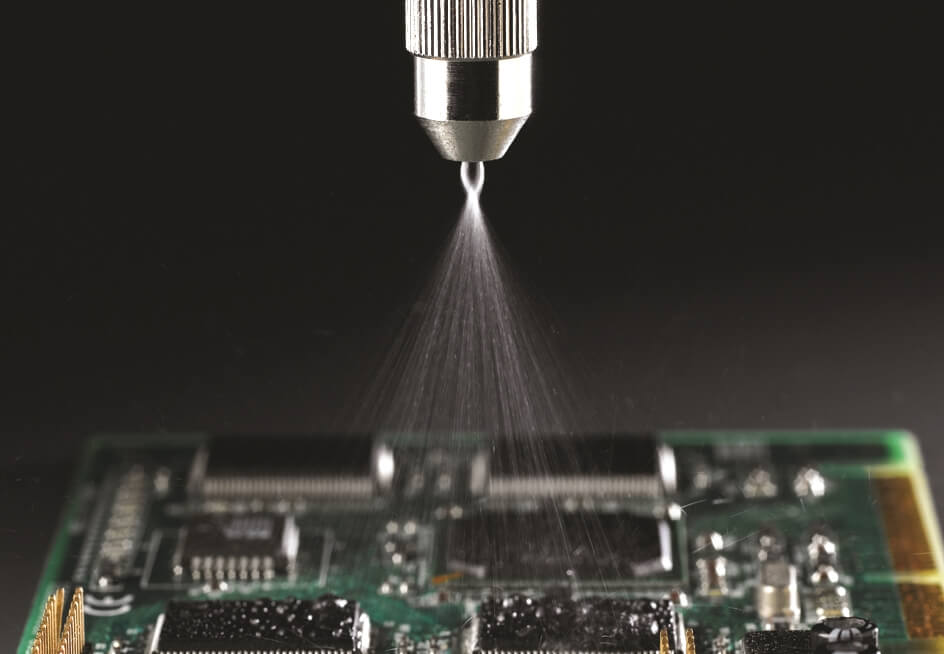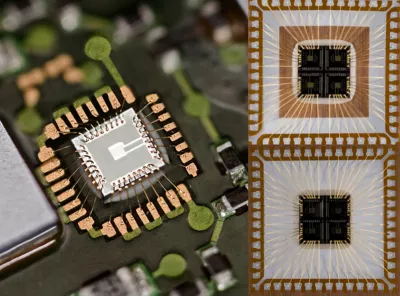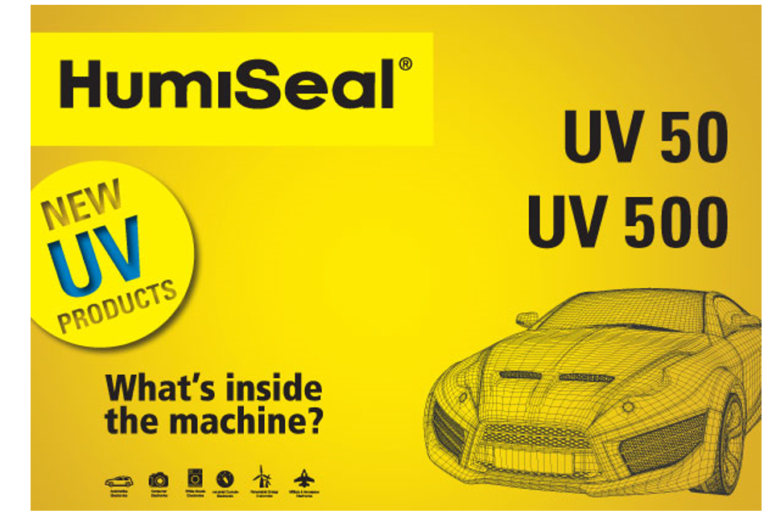Troubleshooting Conformal Coating Defects
Conformal coatings are critical in protecting electronics from moisture, chemicals, dust, and temperature extremes. However, issues during the application, drying, or curing process can lead to defects that compromise performance. Here’s a comprehensive guide to troubleshooting common conformal coating problems — and how to solve them.
- Poor Adhesion
Symptoms: Coating flakes, lifts, or peels from PCB surface.
Root Causes:
-Contaminated substrate (flux residues, oils, fingerprints).
-Improper surface energy or roughness.
-Application over uncured materials or moisture-laden surfaces.
Solutions:
-Clean PCBs using approved solvents (e.g., isopropanol) or automated cleaning systems.
-Use plasma or corona treatment if needed to improve adhesion.
-Ensure substrates are dry and pre-bake boards if necessary.
-Consider adhesion promoters when applying over difficult surfaces like silicone or fluoropolymers.
- Bubbles and Blistering
Symptoms: Air bubbles trapped in coating; blistering post-cure.
Root Causes:
-Air entrapment during brushing or spraying.
-Excessive film thickness.
-Trapped solvent or moisture during curing.
Solutions:
-Apply thinner coats in multiple passes rather than one thick layer.
-Allow proper flash-off between coats (especially solvent-based types).
-Maintain proper temperature and relative humidity during application (ideally <60% RH).
-Preheat the PCB slightly to outgas moisture before coating.
- Cracking
Symptoms: Hairline or wide cracks in the cured film.
Root Causes:
-Coating applied too thick.
-Excessive thermal stress or incompatible CTE between coating and board.
-Over-cured or cured too rapidly.
Solutions:
-Apply coating within the recommended dry film thickness (DFT), typically 25–75 µm.
-Use flexible coatings such for high thermal shock environments.
-Avoid sudden temperature ramps during thermal cycling.
- Fish Eyes and De-wetting
Symptoms: Circular uncoated areas where coating pulls away from the surface.
Root Causes:
-Contaminants (e.g., silicone, oil) reducing surface energy.
-Improperly cleaned PCB.
-Static charge during application.
Solutions:
-Thorough cleaning using cleaning agents.
-Use anti-static measures before spraying.
-Avoid cross-contamination from lubricants or skin oils.
-Consider using surface primers.
- Whitening or Blushing
Symptoms: Cloudy or white appearance in the coating, especially with acrylics.
Root Causes:
-High humidity during solvent evaporation.
-Trapped moisture in solvent-based systems.
Solutions:
-Maintain relative humidity below 60% during and after application.
-Use slower evaporating solvents or thinner blends.
-Ensure boards are pre-baked to remove absorbed moisture.
- Incomplete or Uneven Coverage
Symptoms: Coating missed certain areas or has inconsistent thickness.
Root Causes:
-Inadequate spray pattern or inconsistent applicator movement.
-Poor coating viscosity control.
-Inadequate masking technique or overspray.
Solutions:
-Calibrate spray systems (especially selective coating systems)
-Check coating viscosity regularly with a Zahn or Ford cup.
-Optimize nozzle type and flow rates.
-Use masking solutions such as removable tapes, boots, or liquid mask.
- Tacky or Soft Finish
Symptoms: Coating remains sticky or soft after recommended curing time.
Root Causes:
-Incomplete curing due to insufficient heat or UV energy.
-Incorrect mix ratios in 2K or UV/dual-cure systems.
-Improper storage or expired materials.
Solutions:
-Ensure UV bulbs are within lifespan and calibrated.
-Follow exact mix ratios for 2K coatings.
-Store materials per TDS and SDS recommendations and always check shelf life.
- Masking Issues
Symptoms: Coating leaks under the mask or is difficult to remove.
Root Causes:
-Poor adhesion of masking materials to PCB.
-Masking tape left too long before removal.
-Incompatible masking material with solvent system.
Solutions:
-Remove masking material promptly after partial curing when the coating is still soft.
-Inspect and replace worn or loose masking boots regularly.
Conclusion
Effective conformal coating requires more than just good materials — it depends on cleanliness, process control, environment, and skilled application. By applying these troubleshooting tips based on expert knowledge and recommendations, manufacturers can reduce coating defects, improve first-pass yield, and ensure long-term field reliability.
For best results, always refer to the Technical Data Sheet (TDS) and Application Guide for your specific product.
Please contact GlueRu to provide solutions to your challenges!





